After a week of predominantly north winds, the weather gave us the south winds we needed to complete our remaining burns. We eyed Wednesday (May 12) for our most technically challenging burn of the season: landfill east. This gorgeous prairie hill is owned by Pope/Douglas Solid Waste Management. After meeting with Steve Vrchota (Executive Director of PDSWM) and several staff members to talk about our goals and logistics, Steve gave us permission to conduct a prescribed burn. He also generously offered PDSWM personnel to help cut fire breaks and conduct the burn. On May 12, Stuart and I woke early to stage equipment and make other preparations for the prescribed burn. We decided to start this prescribed burn in the morning to begin before the relative humidity plummeted in the afternoon producing volatile and potentially dangerous conditions for burning landfill east.
We were joined by Brad D., Amy W., and Julia B. who drove up from the Twin Cities as well as Karl, Nick, and Chris from PDSWM. Stuart’s aunt (a photographer) also tagged along to take photos. Around 10 AM we reviewed the burn plan emphasizing safety, gave a quick tutorial on tools, and assigned personnel. Team 1 was responsible for protecting the pasture north of our burn unit should fire move across our burn break while Team 2 and Team 3 would ignite along the east and west edges of the burn unit. We began a test fire at the apex of the hill and it burned beautifully. We cautiously used a wet line to prevent fire from creeping across our northern burn break but the mowed and raked break held up very well. Once Team 2 reach the northeast corner, Team 3 began igniting to the west. The fire moved much more slowly and was much less volatile than we anticipated. Having a well-behaved fire was a huge relief for this burn boss. Stuart and I definitely lost sleep Tuesday night planning for every possible scenario to ensure we could keep the burn crew safe and the fire within the allotted unit.
Once sufficient black had been established at the top of the hill and along the east and west edges of the burn unit, Amy W. and Brad D. ringed the unit with drip torches while all watched with great anticipation. The head fire was not nearly as fast or intense as we anticipated (maybe all the green brome grass?) but it sure was thorough! In just a couple minutes, the head fire and backing fire met in the southwest quarter of the burn unit producing a spectacular cloud of smoke and a uniformly blackened burn unit. Exactly as planned! It will be exciting to watch the east hill green up and I am eager to see what prairie plants have been sheltering below the dense thatch, just waiting for some fire and a little light to make their encore.
The prescribed burn at landfill east went flawlessly. Although the size of our burn crew, the resources we prepared, and the intensity of our preparations were overkill, we would not change any aspect of our preparations or burn plan. Conducting prescribed burns safely is our #1 priority. Having contingencies in place just in case a prescribed fire does not go as planned is a must. Huge thanks to Brad D., Amy W., Julia B., Karl, Nick, and Brian for their help! And thanks to PDSWM for collaborating with us on this project!
As the smoke dissipated over the east landfill prairie hill, I was elated. The burn went better than I could have imagined and excitement was building for summer research. At the same time, I couldn’t help but smile at the thought of this hillside blanketed by wildflowers in just a few short months. It is unlikely this prairie has experienced fire in more than 60 years. Returning fire to the landscape can transform neglected prairie hills like this from grassy slopes dominated by non-native brome grass (Bromus inermis) to beautiful prairie covered in wildflowers and native grasses in just a few years. The landfill hills are already fascinating with many native prairie plant species clinging to the hillside. Before the burn, I saw a couple prairie smoke (Geum triflorum) and heart-leaved alexanders (Zizia aptera) flowering. What plants will show up after we burn? We also observed a handful of bumblebees cruising in search of flowers and several other native bees zipping around (I am not especially adept at identifying these). Will more flowers after this burn mean more bees and butterflies?
What about birds? I observed several clay-colored sparrows which utilize this grassland habitat for breeding and I heard a bobolink fly overhead (one of my personal favorites). Could these and other grassland birds return to nest and take advantage of the post-fire insect buffet? Bobolinks nested in the adjacent pasture (to the east) which is also owned by PDSWM back in 2014. I worry heavy grazing in the pasture may prevent these lively and charismatic grassland birds from returning to nest this year but perhaps they will take up residence nearby. My mind wanders thinking about a sea of purple coneflowers, lilies, sunflowers, and big bluestem swaying in the summer breeze. The landfill hills we study plus the adjacent pasture to the east and another prairie hill to the south could form an incredible block of grassland habitat supporting grassland birds; ducks, pheasants, and other game animals; prairie butterflies and bees; as well as hundreds of prairie plant species with a few more burns and a few less tree. Staring out across those picturesque golden hills silhouetted against a vivid blue sky just makes my imagination run wild. What an incredible place!
Temperature: 62 F
Relative Humidity: 29 %
Wind Speed: 10 mph
Wind Direction: SW
Ignition time: 10:34 AM
End time: 11:14 AM
Burn Crew: Jared, Stuart, Brad D., Amy W., Julia B., Karl, Nick, and Brian + Joyce (photographer)


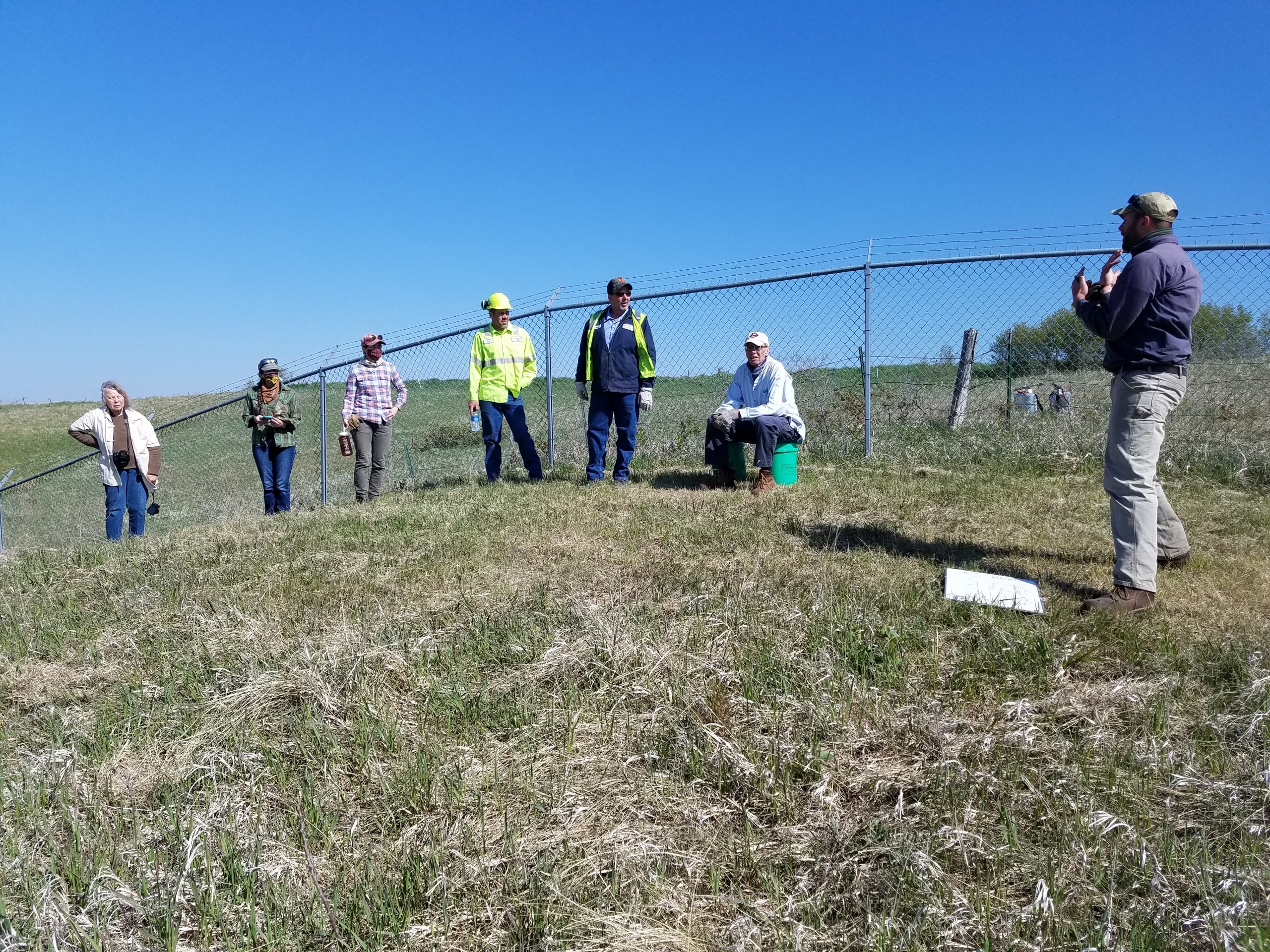
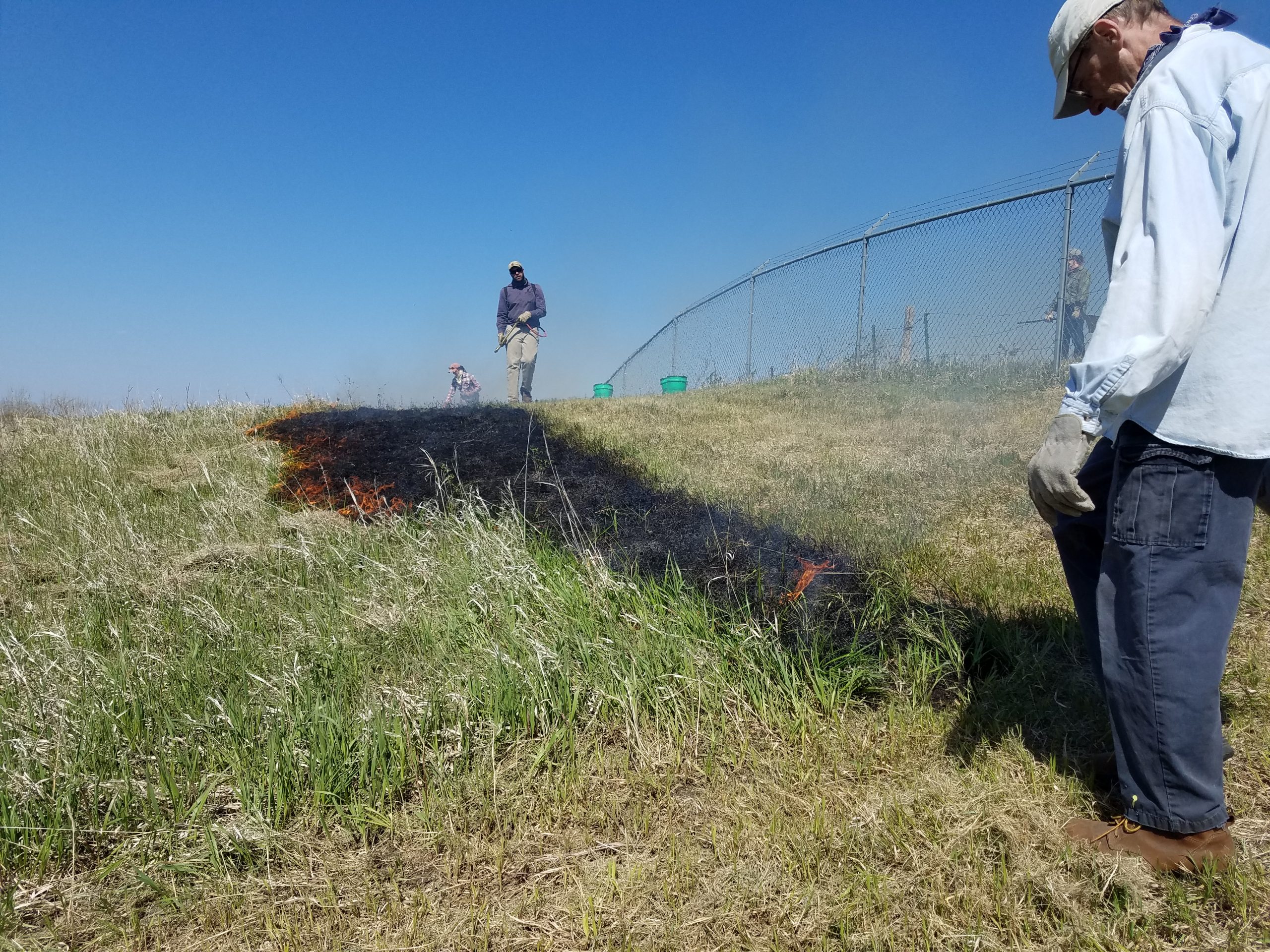

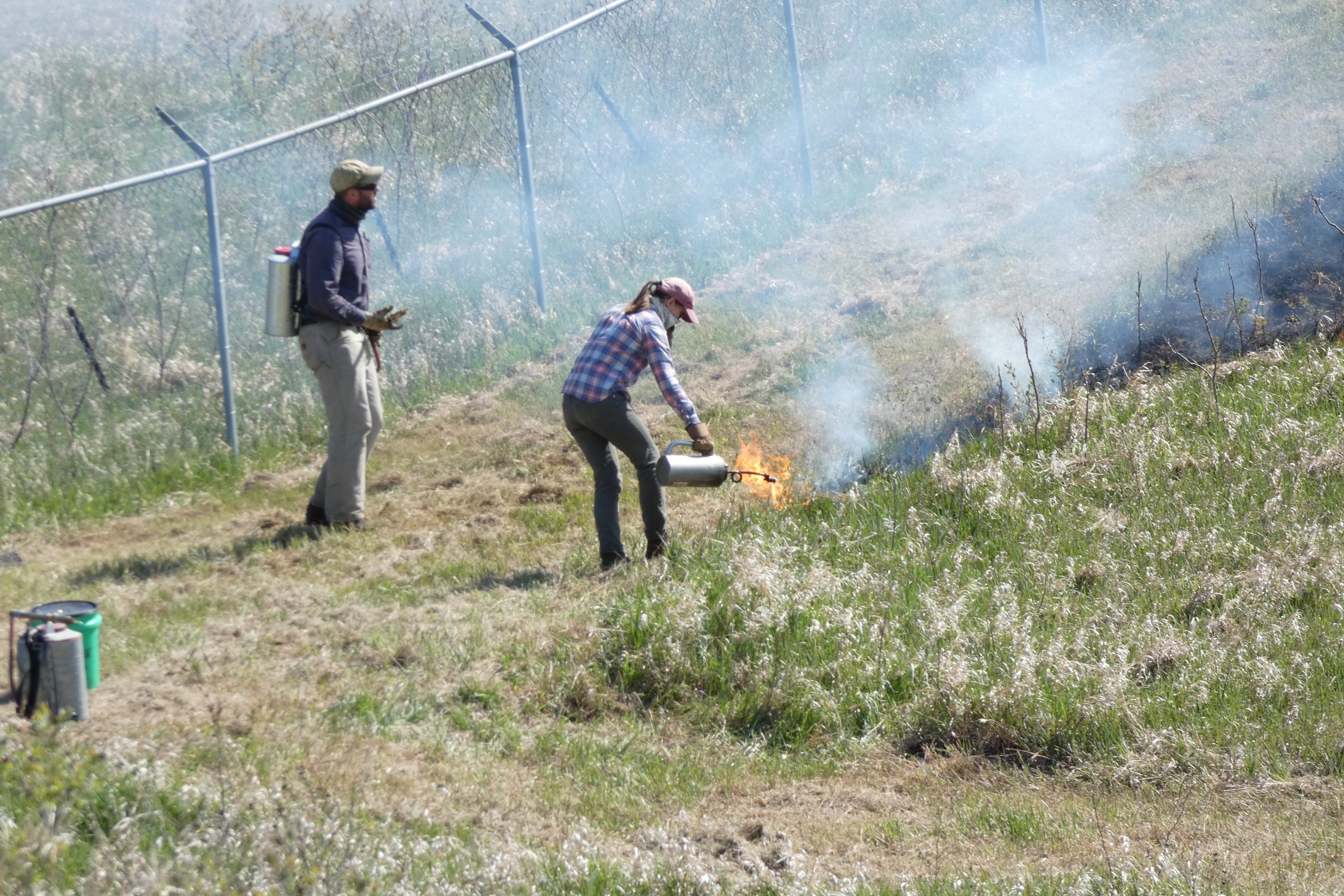
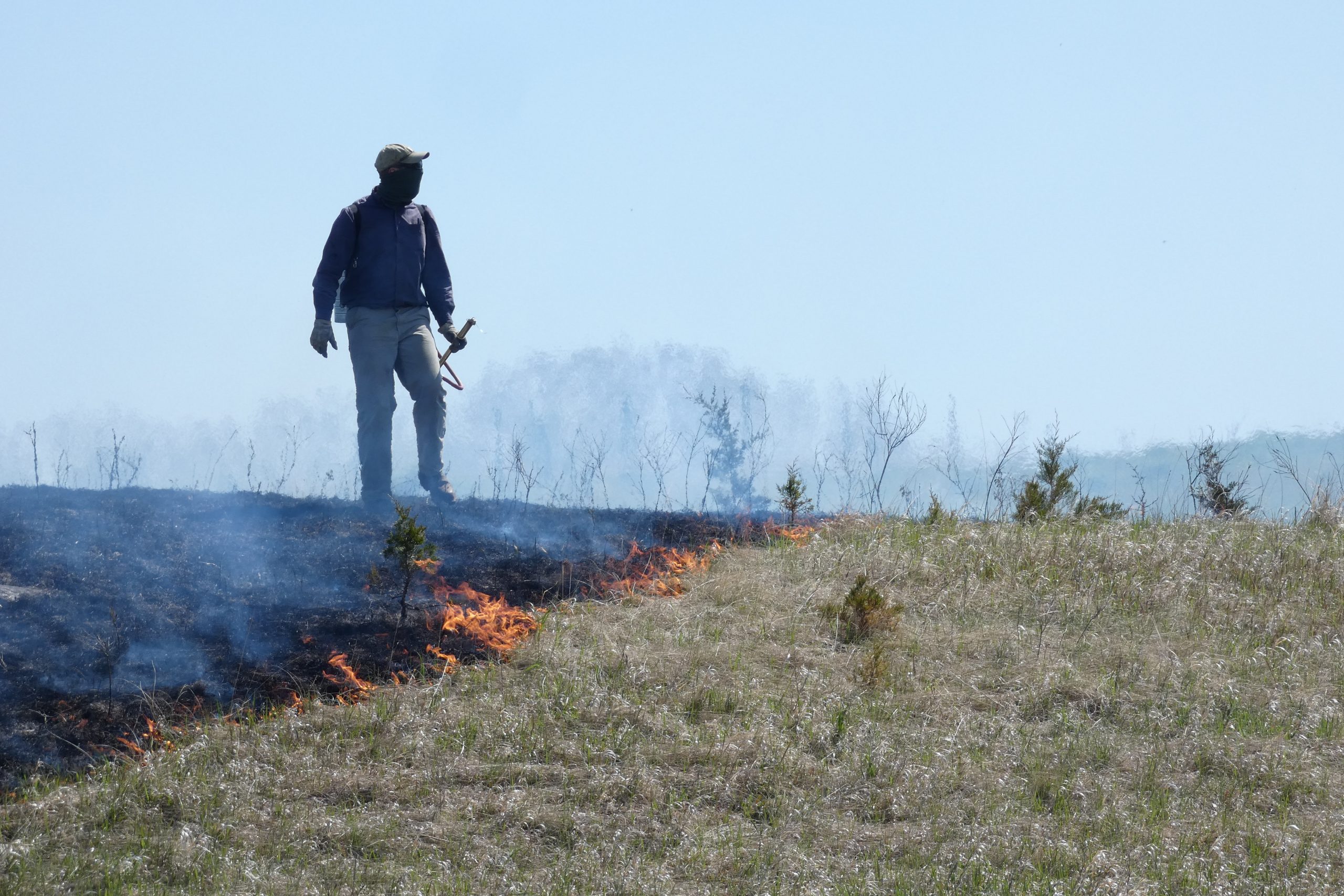





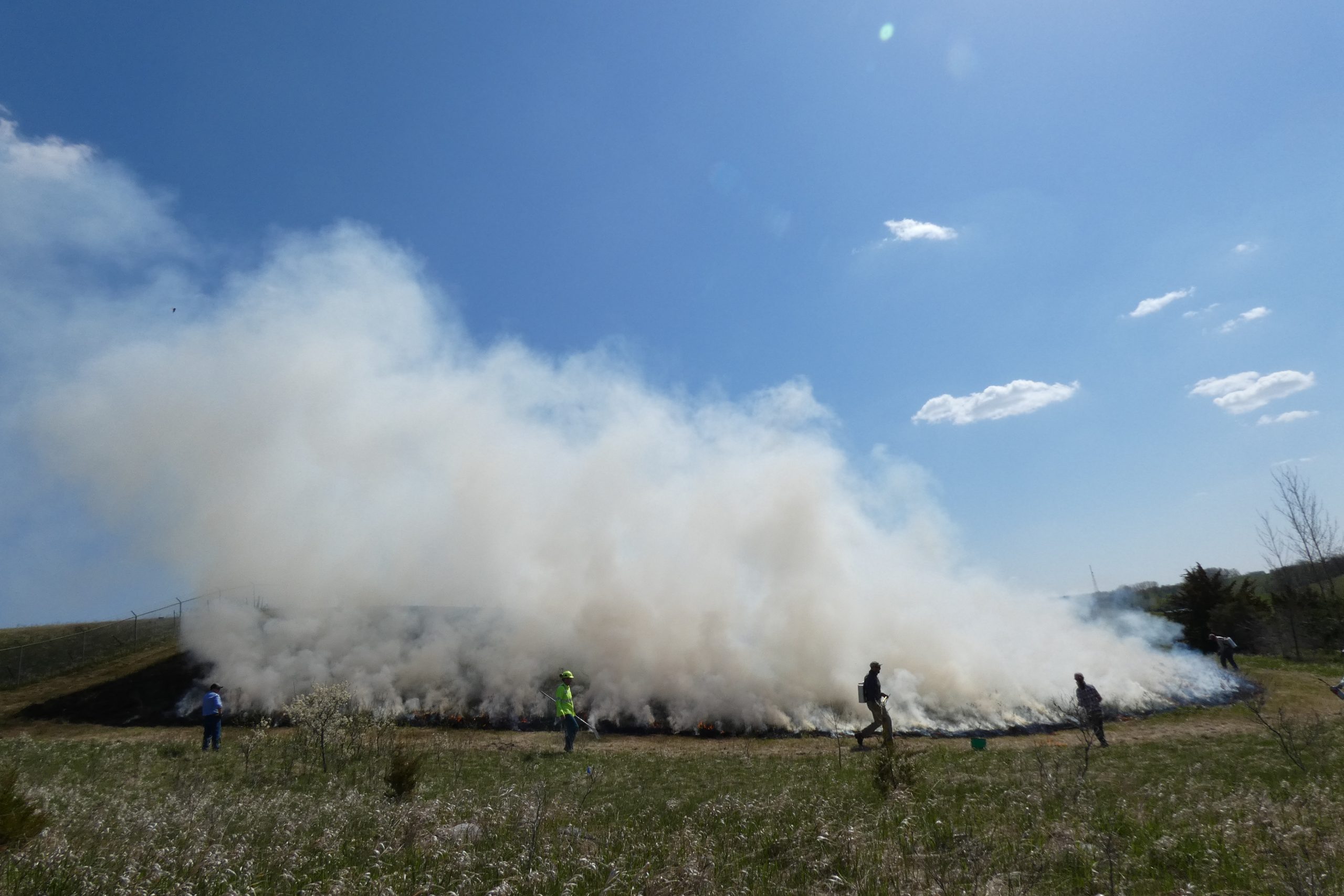
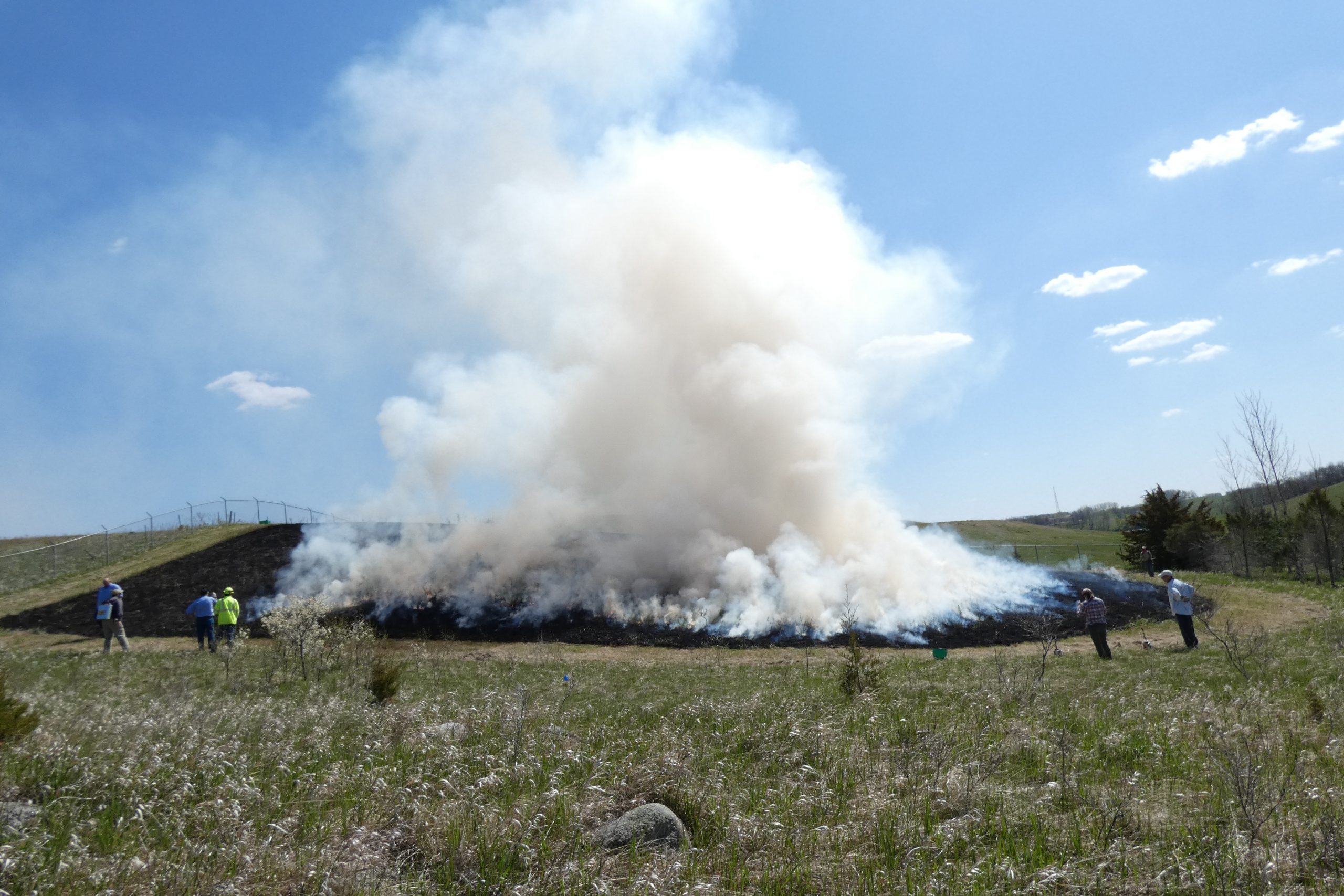

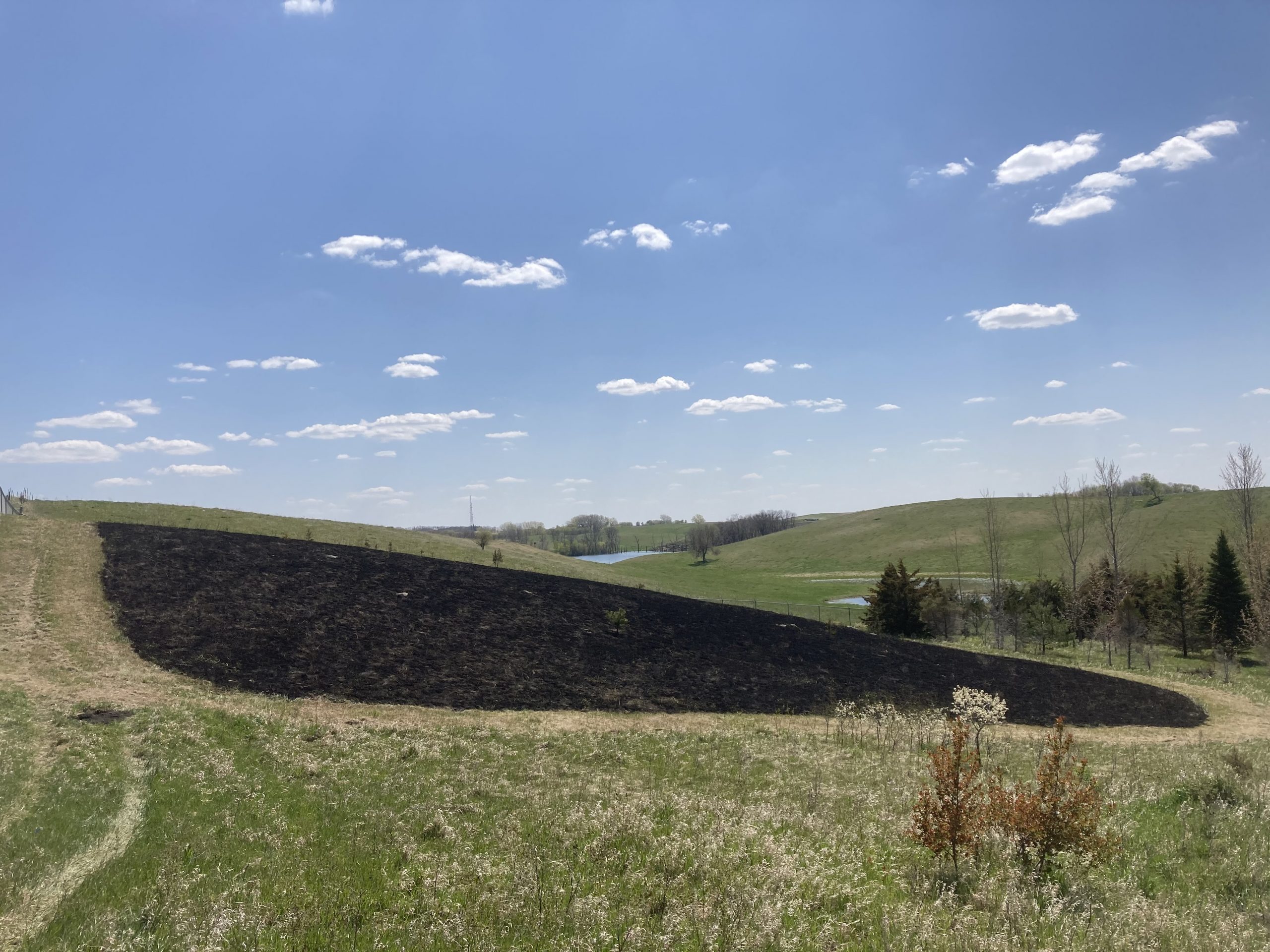
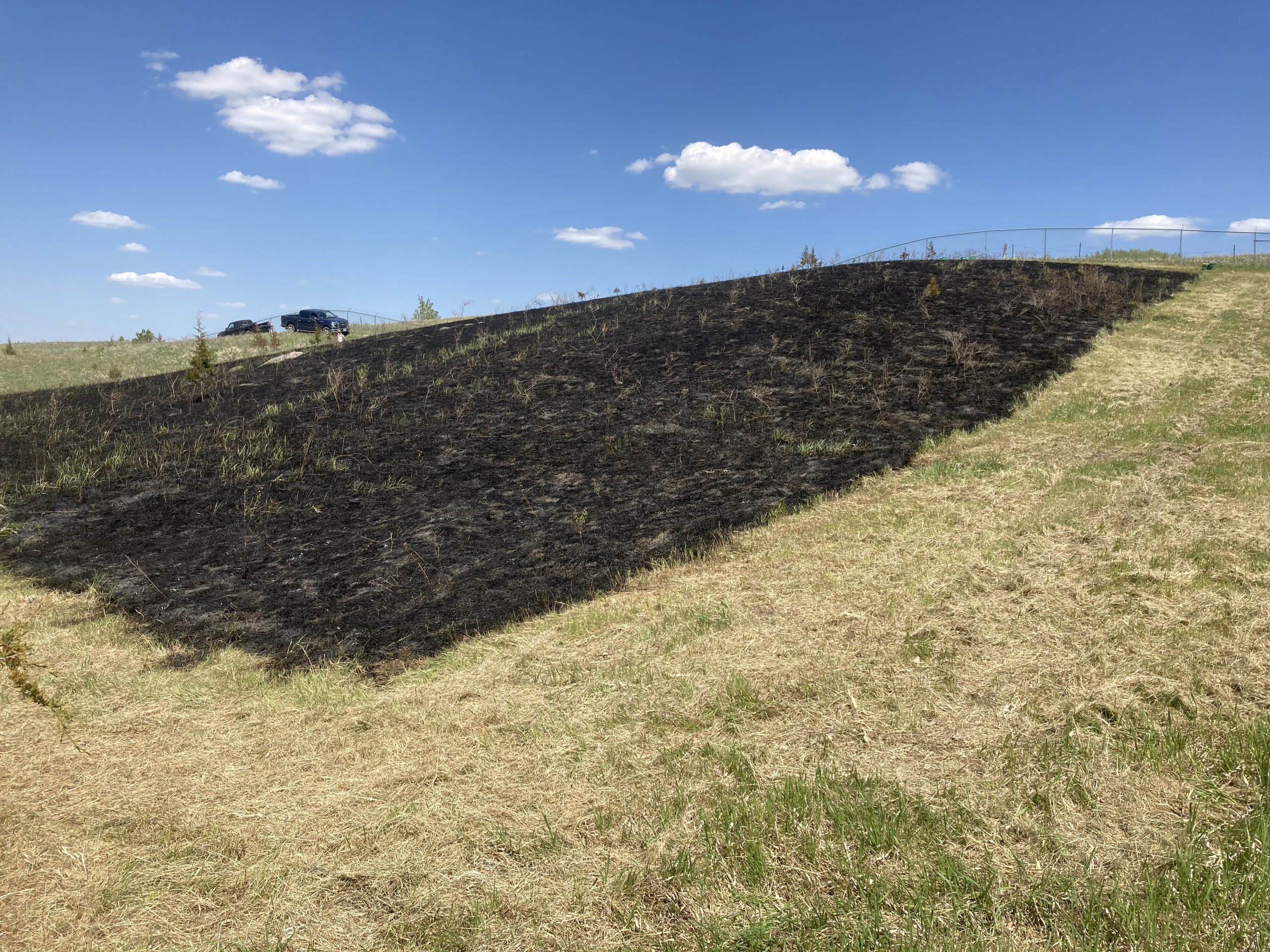
Leave a Reply